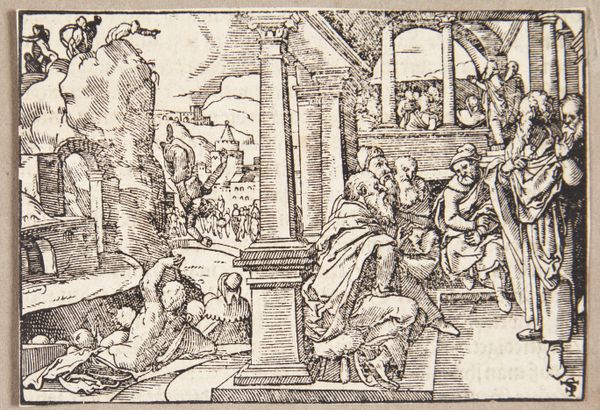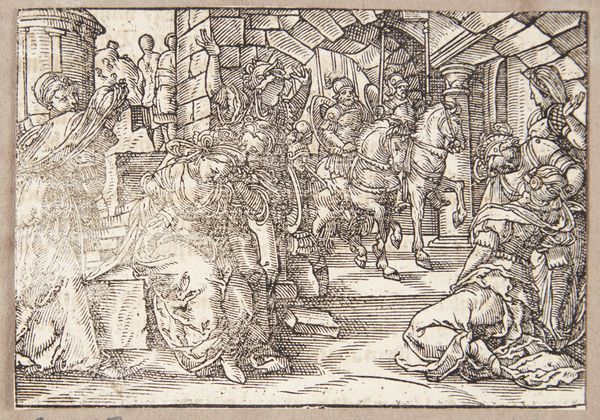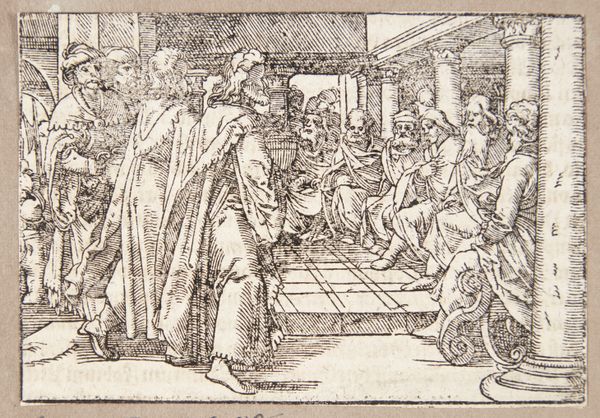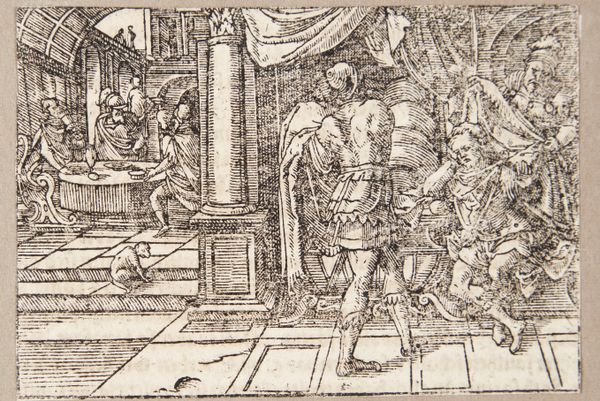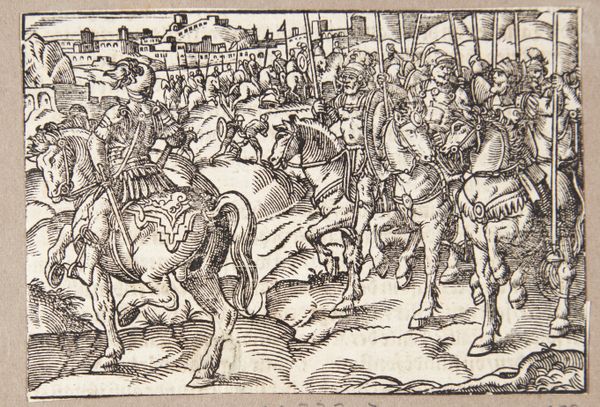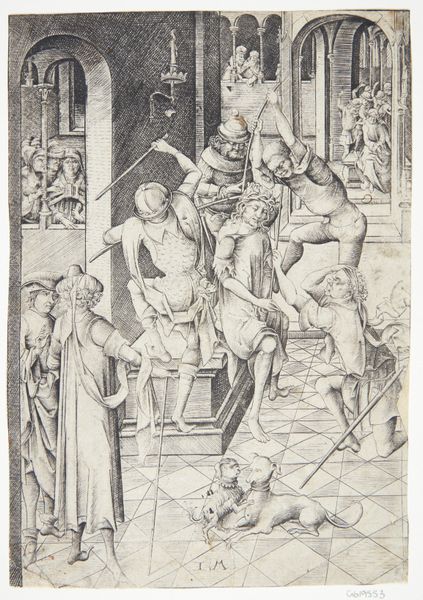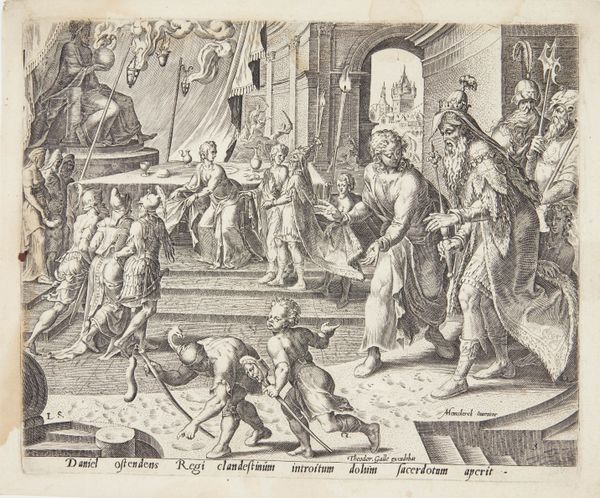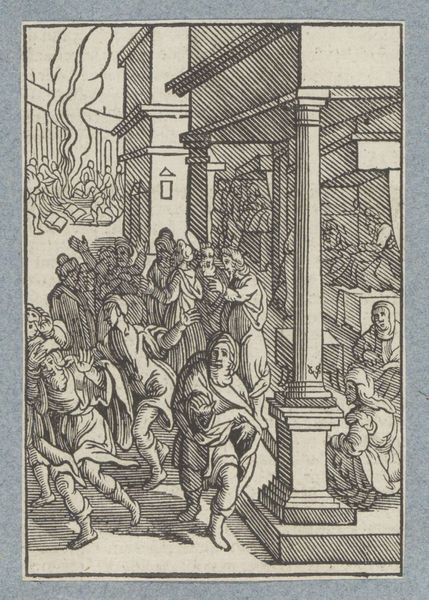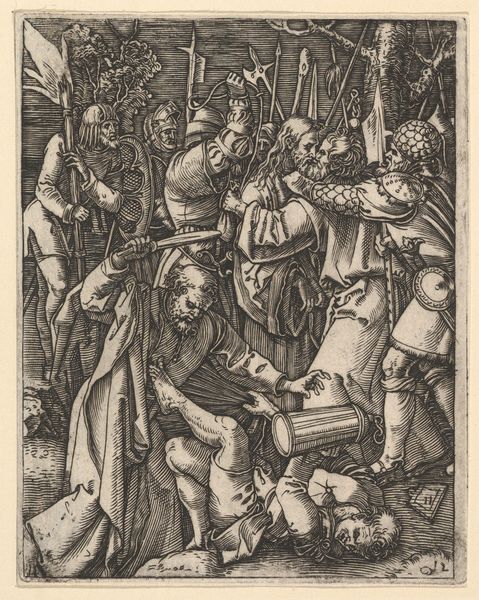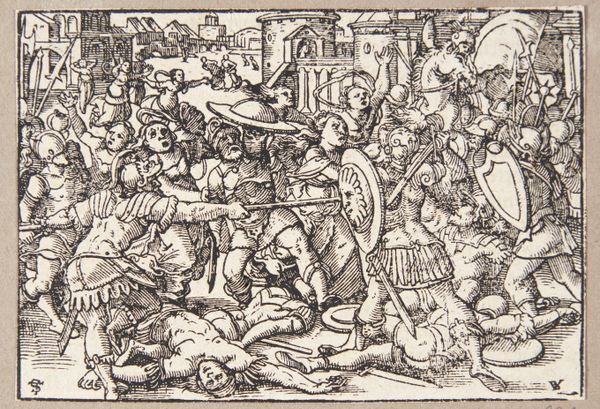
drawing, print, woodcut, engraving
#
drawing
#
ink drawing
#
medieval
#
narrative-art
# print
#
perspective
#
figuration
#
woodcut
#
line
#
history-painting
#
northern-renaissance
#
engraving
Dimensions: 75 mm (height) x 105 mm (width) (bladmaal)
Curator: Immediately striking. Such precise linework creates a dizzying effect, almost violent given the subject. Editor: Indeed. Let’s orient our listeners. This woodcut is entitled “Spurius Cassius kastes ud fra en klippe” created in 1574 by Tobias Stimmer. It’s currently held at the SMK, the National Gallery of Denmark. Curator: Stimmer clearly uses line not just to depict form, but to build texture, depth… almost to overwhelm the eye. Note how the rocky cliff on the left is given the same dense attention as the figures themselves. Is it a critique of power, where everything is flattened, commodified into imagery? Editor: I read it as Stimmer situating this event within a specific historical and political context. We have the scene of execution, certainly, but on the right is a tribunal. A stage, almost, upon which judgments are made. The architectural detail—the columns, the arches—lend the scene an air of classical authority. Curator: And the mechanics of that authority, how decisions about who lives and dies become spectacles. The physical act of casting Spurius Cassius off the cliff –the laborers pushing him, the broken body below – juxtaposed with the deliberations of power, presented like a theatrical performance. What ink and block were used? The physical object held considerable weight. Editor: Absolutely. It reflects the political tensions of the period. Cassius, accused of aiming for tyranny, was sentencedextrajudicially . Stimmer emphasizes the theatricality of power and its relationship with justice, offering an insight into the complex interplay between historical narratives, their visual representation, and socio-political structures. The way a historical figure could be re-fashioned. Curator: Right, even in its time this piece functions as commentary. The social role of printed imagery became a powerful form of discourse beyond religious use. We’re far from the illuminated manuscript. Editor: Indeed. The print's distribution and accessibility allowed the narrative—and its implied critique—to reach a wider audience. Consider how this accessibility challenged established artistic and social hierarchies. Curator: It’s a fascinating snapshot of how visual narratives can be both products of and active participants in historical processes. Thanks to his understanding of process and historical context we're left with this chilling examination of power, material culture, and the nature of political drama. Editor: Yes, understanding the socio-political climate alongside artistic ingenuity is key. What at first glance seems like historical depiction turns into a potent commentary.
Comments
No comments
Be the first to comment and join the conversation on the ultimate creative platform.
